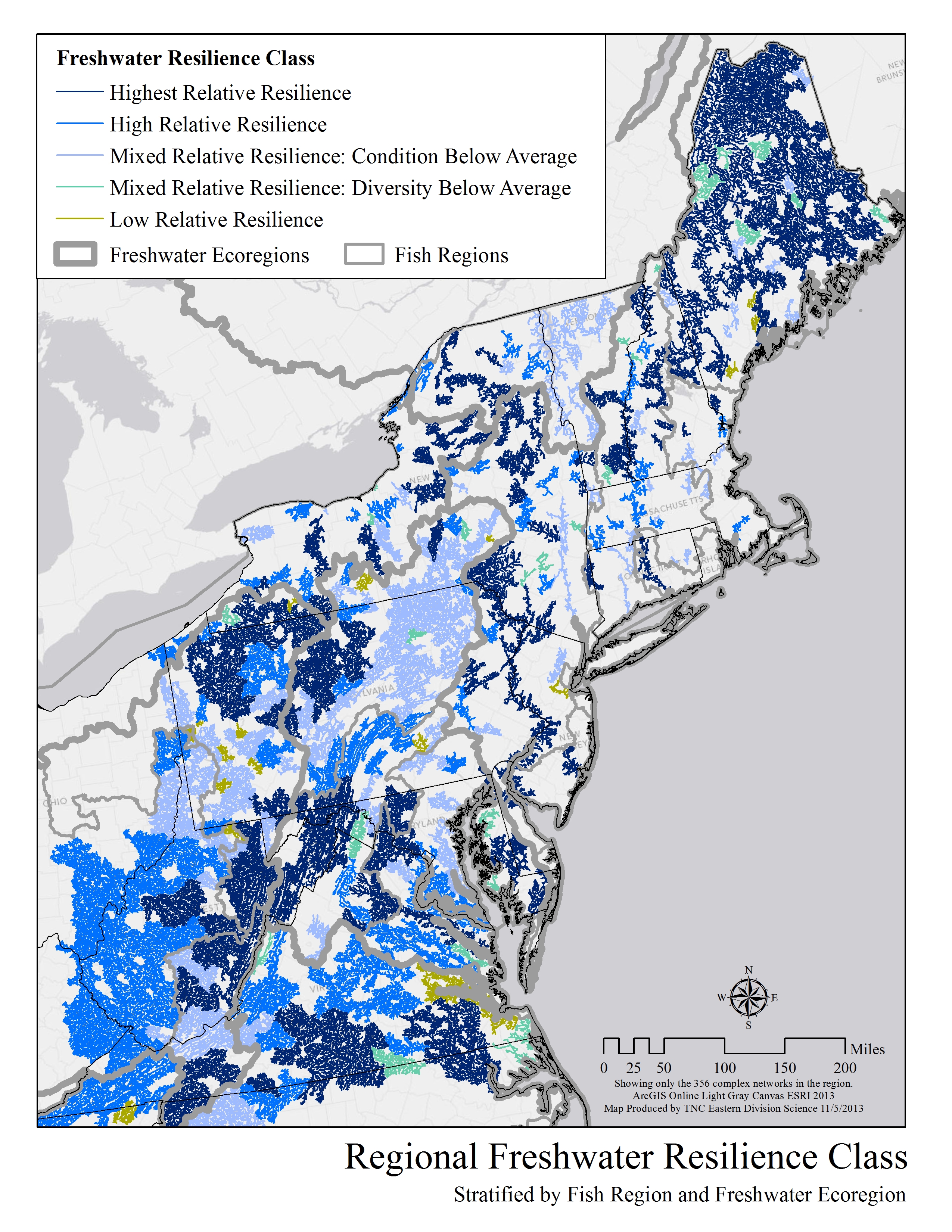Freshwater systems naturally change in response to alterations in the amount and timing of precipitation. Resilient freshwater systems are those that continue to sustain diversity and ecological services as they adapt to climatic change. These rivers have extensive longitudinal connectivity linking tributaries of many sizes, gradients and temperatures, good lateral connectivity linking them to their floodplain, and relatively unaltered natural flows within a permeable watershed.
A team of 13 TNC scientists* developed a method to estimate the relative resilience of streams based on seven characteristics that can be accurately mapped at the regional scale:
Physical Characteristics
Long connected networks (1) linking many tributary sizes (2)
A variety of gradients (3) and temperatures (4) creating a diversity of habitats
|

| Condition Characteristics
Intact lateral connectivity (5) linking river to floodplain
Unaltered flow in watershed (6) so precipitation reaches the river
Watershed mostly natural or of permeable surfaces (7)
|
These characteristics ensure that a stream network encompasses a diversity of environments, allows aquatic species to migrate and find suitable habitat, has clean water delivered to the channel, and that water, nutrients and sediment are stored on the floodplain. In the Northeast and Mid-Atlantic region, 31% of the stream miles were found to be in resilient networks. If replicated elsewhere, we expect the analysis will need to be tailored to the region of interest.
The results can be used to explicitly guide land acquisition, inform watershed management, and prioritize dam removals towards the goal of sustaining or increasing the resilience of freshwater systems. We are currently working on tools and materials that we expect to help with:
- Conservation Planning: prioritize resilient streams and lakes for conservation action such as dam removal based on projected increases in resilience
- Floodplain Restoration: Highlight critical floodplains for land conservation based on contributions to resilience, storage capacity, and potential risk mitigation
- Headwater Protection: Prioritize headwaters based on their contribution to resilience and water supply
- Coldwater Refugia: Identify lakes and streams likely to maintain cold water fisheries
- Riparian Climate Corridors: Identify resilient streams that also function as climate corridors for terrestrial species

